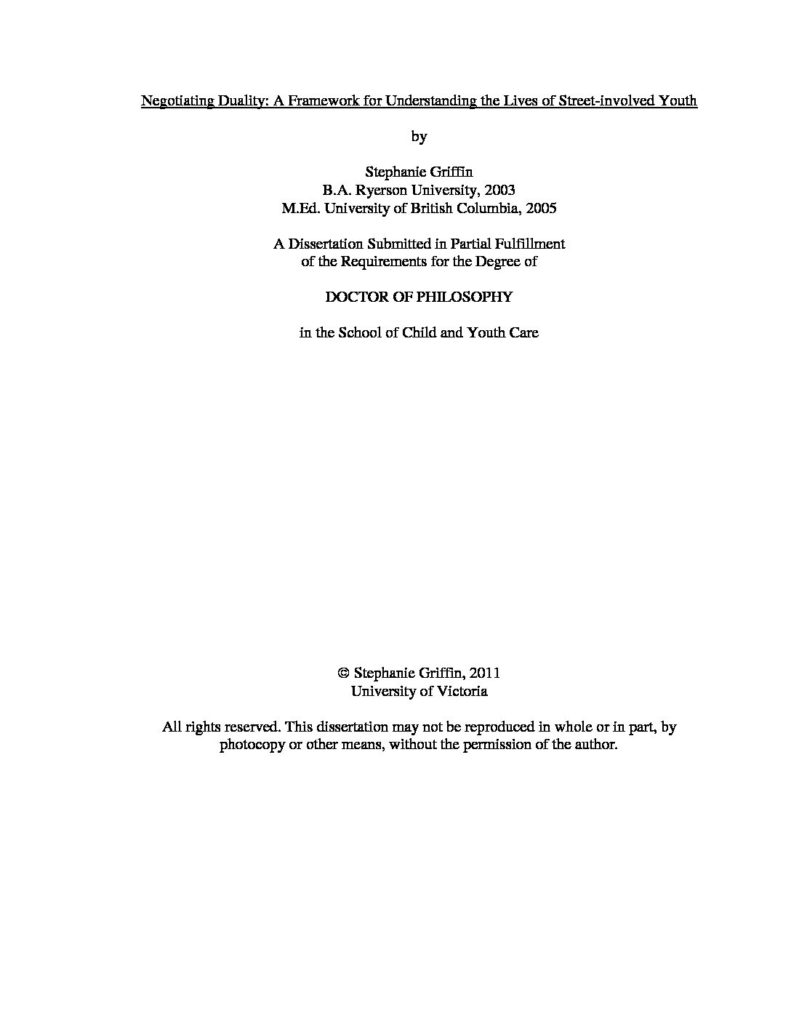
Negotiating Duality: A framework for understanding the lives of street-involved youth
Downloads
Summary
In this study, classic grounded theory is used to explore and explain the
relationship between street-involved youth and the streets. The main concern of the youth
in this study is negotiating duality, and at the heart of this negotiation process is seeking
safety on the streets while struggling to emerge into mainstream society.
Data was collected in a mid-sized urban Canadian city through semi-structured
interviews, observation, conversations and photography with 52 current street-involved
youth, 6 former street-involved youth, and 8 adults who work with this population.
The study led to the development of a substantive theory of negotiating duality,
the core construct which emerged as the means by which street-involved youth handle
their need to both survive in the day-to-day context of the streets while simultaneously
working their way off the streets and back to mainstream society. Four domains of
duality emerged as significant: dual logic, dual space and place, dual identity, and dual
normality. Additionally, three interrelated concepts (social processes) emerged from the
data: seeking safety, struggling to emerge, and living outside normal.
These processes were characterized by five bifocal strategies: escaping, provisioning, anchoring, routing, and using (in)visibility. This theory is a model of person-place interaction, explaining the dynamic relationship street-involved youth have with and between the street and mainstream society. The findings of this study enhance understanding about street-involved youth and their interaction with the streets and mainstream society and provide a framework that can be utilized to inform youth homelessness services, policy development, and future research.
Discussion
Users can discuss this report and make suggestions for future updates. You must be signed in to submit a comment.
No comments
Join the conversation and
Become a Member Existing member loginbecome a member.